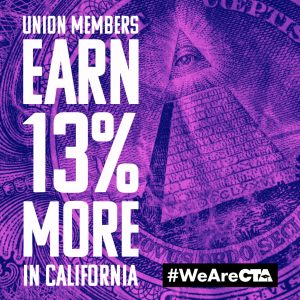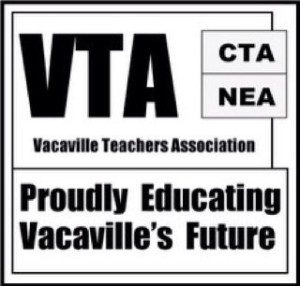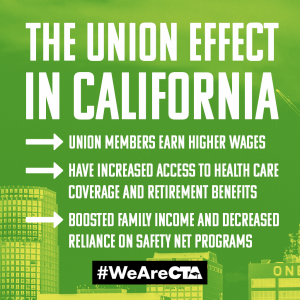We hope your school year is off to a good start. As you know, there’s an election just around the corner and we can expect one of the most crowded ballots ever. There’s a lot to know about and a lot to vote for. We know you are busy, so we’ll make it quick.
Campaign Updates:
On Wednesday, we’re about to hit another major milestone in our campaign: 55 days to Election Day! In order to spread the word about the immense importance of Prop. 55, we’re planning a collaborative social media push, or Thunderclap, on Wednesday, September 14 at 11:00 AM PST. Please join us!
Not everyone is available at that exact time to post, so by signing up with our Thunderclap today, the app will post automatically for you *one time* on Wednesday!
Here’s how to sign up for Thunderclap:
- Visit http://protectingcalifornia.com/thunderclap and click on “Join this Thunderclap.”
- You will be given three options: “Support with Facebook,” “Support with Twitter,” and “Support with Tumblr.” Choose one, and click on the button.
- A new window will pop up allowing you to create your own custom message, or select the default message. Press the “Add My Support” button.
- You may be prompted to sign into Facebook, Twitter and/or Tumblr and to authorize the Thunderclap app. After you sign in, press “OK” and you will be added to the Thunderclap!
- On September 14, all of us will collectively post to share our support for Prop. 55.
Want to post on your own? Here’s what to post on September 14 at 11:00 AM PST:
#55toProp55 – 55 days until we vote YES on #Prop55, the initiative to help our kids thrive! http://protectingcalifornia.com/55toprop55
Campaign Updates – continued:
- A 2016 CTA Campaign Priorities Folder (already mailed). Read it. Keep it. Use it to organize all your election materials.
- The 2016 California Educator election issue goes more in depth on the issues (mailing in two weeks).
- The Campaign website is there for you 24/7, complete with resources like our initiative recommendation flyers in 11 different languages. Download and share!
- The CTA Voter Guide builder. Just type in your address and you’ll get a customized guide.
- Text CTA ACTION to 69866 for campaign updates to your phone.
CTA is recommending YES on Propositions 55, 58 and 52.
YES on Prop. 55: Now that you are back at school, it’s a great reminder why we can’t go back to the days of budget cuts, educator layoffs, larger class sizes and music and art programs eliminated. Our kids need us to vote YES on Prop. 55! The San Jose Mercury News agrees, urging readers to vote YES on Prop. 55. You can help spread the word:
- SHARE the Yes on 55 campaign radio ad, “Thrive” on your social media outlets.
- TELL US why you believe it’s important to you and your students that Prop. 55 passes. You can submit your story or use #MyStoryProp55.
- FOLLOW Yes on 55 updates on social media: Facebook | Twitter | Instagram and post your own using hashtags like #YesOn55 and #Prop55.
- SIGN UP for campaign emails and add your name in support of YES on Prop. 55!
YES on Prop. 58: The LEARN initiative will expand opportunities for California’s students to become proficient in English as quickly as possible. The Los Angeles Times voices support for Prop. 58, citing parent empowerment as the key reason, as does Senator Ricardo Lara, who encourages a Yes on 58 in this video.
- SIGN UP for campaign emails on Prop. 58 and follow Yes on 58 on Facebook and Twitter.
- DOWNLOAD the materials and resources to LEARN all there is to know about Prop. 58.
YES on Prop 52: This will maintain billions of dollars in federal funding to support health for low-income children and seniors. The Sacramento Bee and Bakersfield Californian recommend a Yes vote on Prop. 52.
Interested in Volunteering?
Stay tuned for many opportunities for you to volunteer and take action to support candidates committed to providing our students with the quality education they need and deserve. These will range from online activism to phone banking and walking precincts. Our communities look to you for guidance on how to vote in elections so they need to see you and hear from you directly.
Thank you!
Webspace paid for by Vacaville Teachers Association Political Action Committee – ID# 1222549




